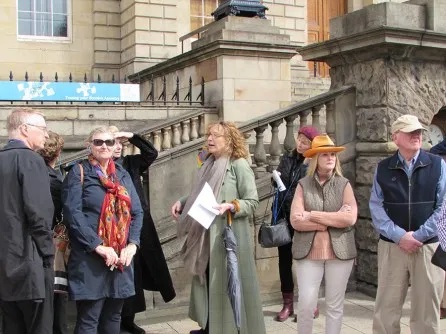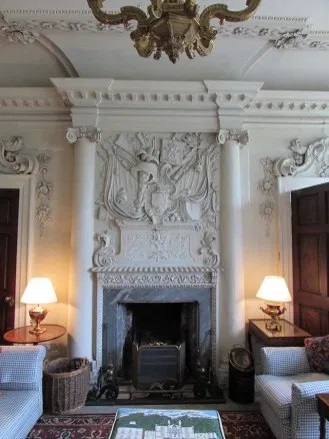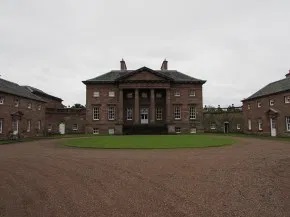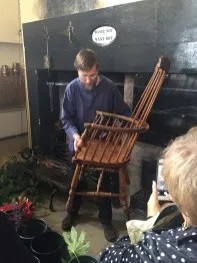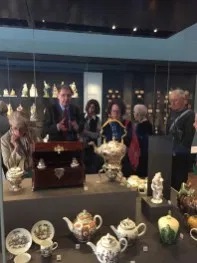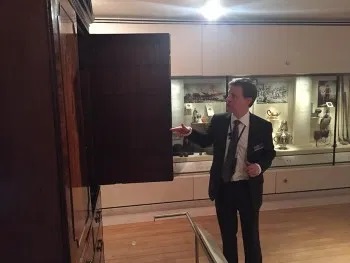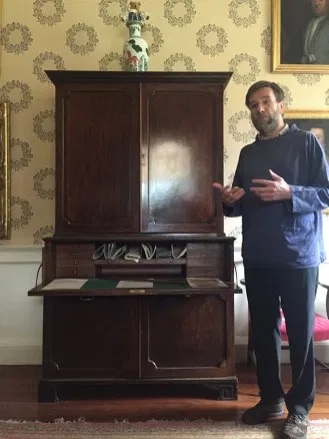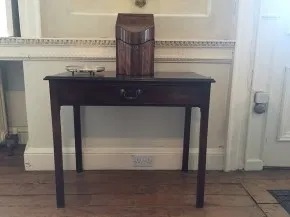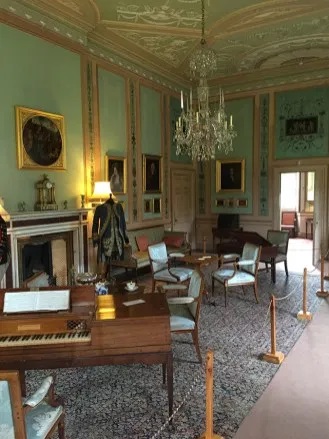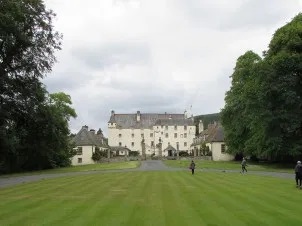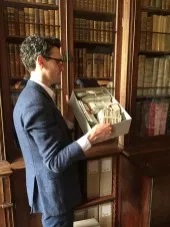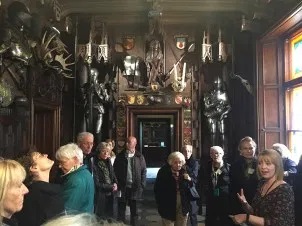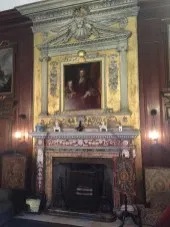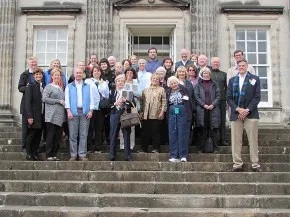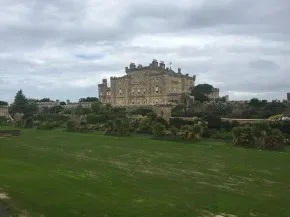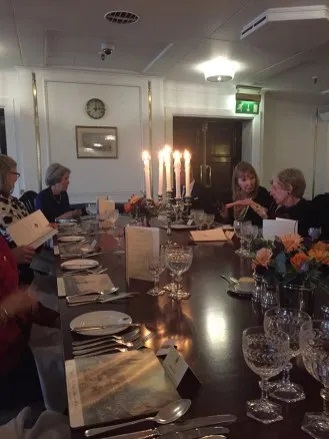Scotland: A Legacy of Cultural Achievement

After two years of planning, the Decorative Arts Trust launched our most ambitious Study Trip Abroad to date. All told nearly eighty members filled three back-to-back excursions to Scotland, a tour appropriately titled “A Legacy of Cultural Achievement.” The itinerary touched on the numerous highlights of Scotland’s rich history as well as the craftsmen and artistic influences that made their way to America.
Beginning in Edinburgh, participants enjoyed a walking tour designed to explore the contrasts between the city’s medieval Old Town and the Enlightenment-era New Town. Laid out in 1767 by a 28-year-old James Craig, the New Town also introduced the group to the architectural sensibilities of Robert Adam, who established the neoclassical idiom there with the construction of the Register Building. City regulations mandated highly finished facades intended to draw fashion-conscious residents across to the more spacious and sanitary portion of the city. These exteriors were a stark contrast to the irregular appearance of the low-cost free stone used throughout the Old Town.
Outside the Edinburgh city limits, we toured numerous country houses connected to the Adam family of architects, including the patriarch William and his sons John, James, and Robert. William was an entrepreneur extraordinaire and supplied building materials for his projects from his own quarries. His exuberant Baroque and Palladian houses and interiors were de rigeur, often featuring plasterwork by master stuccador Thomas Clayton and woodwork from carver and gilder William Strachan. Participants were treated to excellent examples of William’s oeuvre at Arniston and The Drum, both private houses. It was not unusual for one of William’s sons to later complete his father’s designs or modify them to suit later fashions, as in the case of Arniston.
The participation of Scottish decorative arts scholars enhanced our study of the material on view. Stephen Jackson and Godfrey Evans shared the exceptional collection of the Scottish National Museum. Our members gained immensely from the guidance of furniture historian David Jones, who provided in-depth connoisseurship lessons on Scottish cabinetmakers, ensuring that we could distinguish the work of Edinburgh wrights Alexander Peter and William Trotter. David’s gracious instruction enhanced the visits to many of the public and private collections visited, including Dumfries House, Mellerstain, Hopetoun House, Culzean Castle, and Traquair.
Trust members also received a good dose of Scottish history, learning about the clans and their strife that dominated the country’s struggles between the 13th and 16th centuries. Despite generations of political turmoil, Scottish intelligentsia became profoundly influential in Western thought and civilization through the Scottish Reformation and Enlightenment. Edinburgh was known as the Athens of the North and served as a leading center for economic, political, and medical discourse and education.
The connections with America abounded. Participants on our third tour visited Paxton House, furnished by Thomas Chippendale in the “neat and plain” style of furniture preferred by George Washington and his Chesapeake contemporaries. The groups also saw the parallels between the work of Edinburgh cabinetmakers and the furniture of craftsmen such as Robert Walker and Thomas Affleck who emigrated from Scotland to Virginia and Pennsylvania, respectively. Scotland’s central role in the transmission of style to the American colonies was clear, with both countries establishing a cultural and aesthetic identity distinct from English patterns.
The preservation of historic sites and objects defines Scotland’s strong sense of national pride. At Traquair, Scotland’s oldest continuously occupied house, the family now proudly displays items relating to their support of Mary, Queen of Scots, the Jacobite Cause, and their Catholic faith, which was outlawed under sanctions from the government until emancipation in 1829. At Abbotsford, historic curiosities collected by Sir Walter Scott were tied to major figures and events from Scottish history, including William Wallace and the Battle of Culloden. At Bowhill, a house greatly expanded throughout the 19th century, we encountered the Duke of Buccleuch’s new initiatives in the conservation of original wall treatments, not to mention the world-class painting collection of this important Scottish country house. Today, the quest to preserve Scottish heritage in a sustainable manner is resulting in diverse approaches to public sites, such as the Scottish National Trust’s efforts at Newhailes, private charities that preserve family homes such as Hopetoun, and many homes and collections that remain in private hands, such as Balcarres House.
Thanks to the hard and diligent work of our staff, representatives of the Board of Governors, and our colleagues at Specialtours, the three back-to-back study trips (separated by two Highland extensions nonetheless) were our most popular trips to date. Not wishing to rest on our laurels, however, preparations are in full swing for subsequent adventures in Venice and the Veneto in October 2017, Sweden and Denmark in May and June 2018, and Prague and Vienna in October 2018. We are most grateful for the continued enthusiasm and support of the members who attend these wonderful Study Trips Abroad!
About The Decorative Arts Trust Bulletin
Formerly known as the "blog,” the Bulletin features new research and scholarship, travelogues, book reviews, and museum and gallery exhibitions. The Bulletin complements The Magazine of the Decorative Arts Trust, our biannual members publication.









